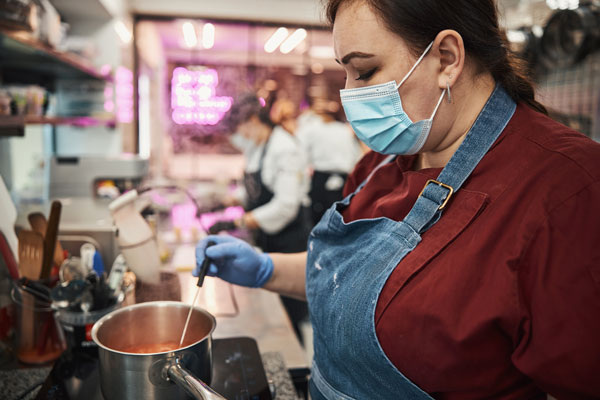Ongoing Outbreaks: What We Can Learn from the Most Recent Carrot and Cucumber Outbreaks
Last month in our blog, we highlighted the recent E. Coli outbreak stemming from onions served at McDonald’s restaurants. In our blog, we highlighted some key considerations when serving fresh produce that often lacks the kill step that we have with most proteins. However, since that blog was published, we’ve had two more high profile outbreaks across the United States involving fresh produce.
In November, a recall was initiated by a company when their carrots, which were packed as both a standalone product (whole organic carrots) and in organic and conventional vegetable medley packages after it was suspected that they may have been contaminated with E. coli O121:H19. As of late November 2024, investigations by the FDA and CDC have linked contaminated carrots to over 39 illnesses, 15 hospitalizations, and one death.
Cases span the US, including states from Washington, Oregon, and California to states as far east as New York and Massachusetts. The carrots in question were distributed by a national brand and primarily sold at large retail chains. The FDA has issued a recall of the implicated products, urging consumers to check their purchases and discard affected items. The source of contamination appears to be linked to agricultural water used during irrigation.
Almost simultaneously, a Salmonella Typhimurium outbreak has been tied to fresh cucumbers distributed to 36 states. As of this writing in early-December 2024, the outbreak has resulted in 68 reported illnesses across 19 states, with 18 hospitalizations. While no fatalities have been recorded, the widespread nature of the contamination has prompted significant recalls, affecting not only whole cucumbers but also prepackaged salads and sushi products containing the cucumbers.
Retailers and distributors are cooperating with the FDA to remove affected products from store shelves. But for consumers and foodservice operators, it is recommended to avoid eating or serving cucumbers unless you can confirm their origin and safety.
…both of these outbreaks underscore the risk of cross-contamination during food handling and processing.
There isn’t much more that I can add to last month’s blog post related to handling fresh produce, but both of these outbreaks underscore the risk of cross-contamination during food handling and processing. While cucumbers are often considered low risk in terms of contamination, improper handling during washing and packaging can easily spread harmful bacteria. Many times our employees don’t always consider these as “potentially hazardous,” but we must ensure that we follow the same strict sanitation protocols that we require with meat products to prevent cross-contact between contaminated and uncontaminated products.
These incidents underscore the importance of maintaining rigorous safety standards at every step of the food supply chain. From farming to processing and distribution, gaps in safety practices can lead to significant public health risks. Foodservice managers play a role in this system by staying informed about recalls and acting upon those recalls quickly.
As federal agencies continue to investigate these outbreaks, ongoing collaboration between regulators, producers, and foodservice operators is essential to preventing future incidents and ensure a safer food supply. Risk Nothing.
READ MORE POSTS
Food Traceability in Foodservice Operations: An Essential, and Soon-to-be Required, Component of your Food Safety Plan
In June, I discussed the importance of having a solid food defense plan, and I provided you some resources for developing or strengthening your food defense plan. As I was writing those blogs, my mind kept turning toward food traceability. While they are distinctly different concepts, food traceability goes hand-in-hand with a food defense program. I would argue for your food defense plan to be effective, you must have an effective internal food traceability program, where you can trace the product back to the supplier (backward traceability), but also be able to trace the product from the supplier to the guest who was served the product (forward traceability).
Food Defense Plan Resources – at just the right price…
Earlier in the month, I discussed the importance of having a solid food defense plan in place for your foodservice operation. Even if the first version of your plan is not perfect, it is a start. Having plans down on paper will force you to think through the process and ensure the vulnerable points where opportunities exist for possible contamination within the operation are mitigated.
Don’t Turn a Blind Eye to Your Food Defense Practices
Late last week, as I mindlessly scrolled through Twitter, I ran across a Tweet suggesting the #IceCreamChallenge from summer 2019 was the real cause of the Coronavirus spread. Of course, the Tweet was made tongue in cheek, but it did cause me to reflect on that challenge, which had a short life on social media in the summer of 2019.
Salmonella and Listeria monocytogenes: Serious Threats to the Safety of Food
Earlier in the month, I mentioned the top microbial enemies we all face in foodservice operations, E. coli, Campylobacter, Salmonella, and Listeria monocytogenes. While we discussed E. coli and Campylobacter, we did not get around to discussing Salmonella or Listeria monocytogenes.










